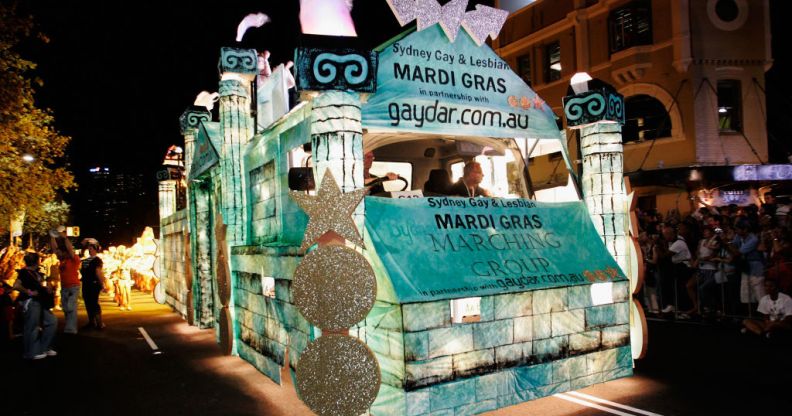What is ‘gaydar’? Everything you need to know about the LGBTQ+ term

The Gaydar float makes its way along Oxford Street during the 2007 Sydney Gay and Lesbian Mardi Gras parade March 3, 2007 in Sydney, Australia. (Getty)
You may well have heard someone – even a friend – say “oh yes, I have good gaydar. I can tell whether someone is LGBTQ+”. In short, gaydar is the idea that you can tell someone is a member of the LGBTQ+ community just by looking them.
There’s even a dating website for gay and bisexual men called Gaydar, which has been running for some time and often sponsors LGBTQ+ events like Pride marches.
However, the concept of ‘gaydar’ is not only inaccurate, it also encourages dangerous stereotypes, research suggests.
In 2015, scientists at the University of Wisconsin-Madison conducted a study to challenge the so-called “gaydar myth” in a paper published in the Journal of Sex Research.
Researchers found that although many view the idea as harmless, it is actually still stereotyping – just in a more subtle form.
we can all agree that straight people saying they have a “gaydar” is offensive right :/
— v 🤍 (@apathettical) December 25, 2020
Is ‘gaydar’ an offensive term?
“Most people think of stereotyping as inappropriate,” said William Cox, lead author of the paper.
“But if you’re not calling it ‘stereotyping,’ if you’re giving it this other label and camouflaging it as ‘gaydar’, it appears to be more socially and personally acceptable.”
Cox proved this theory by splitting the study’s participants into three groups. One was told that the concept is real, and another that gaydar is nothing more than stereotyping.
They were then shown photos of men and a statement about their interests.
The group that was led to believe gaydar is real were much more like to make assumptions based on traditional stereotypes – such as “he likes shopping”, or “his is emotionally sensitive”.
“If you tell people they have a gaydar, it legitimises the use of those stereotypes,” Cox argued.
Another reason gaydar is often misused, Cox said, was because LGBTQ+ people still make up such a small percentage of the population.
“Imagine that 100% of gay men wear pink shirts all the time, and 10% of straight men wear pink shirts all the time.
“Even though all gay men wear pink shirts, there would still be twice as many straight men wearing pink shirts,” he said.
“So – even in this extreme example – people who rely on pink shirts as a stereotypic cue to assume men are gay will be wrong two-thirds of the time.”
Previous surveys have differed in result, with some insisting that the “gay sixth sense” does indeed exist.
And in 2014, an American politician found himself in hot water for claiming that men from the Southern region of the country “set off his gaydar”.
The former Democratic Governor of Montana, Brian Schweitzer, said: “Don’t hold this against me, but I’m going to blurt it out. How do I say this… men in the South, they are a little effeminate.
“They just have effeminate mannerisms. I would say — and I’m fine with gay people, that’s all right — but my gaydar is 60-70 percent.”
How did this story make you feel?

